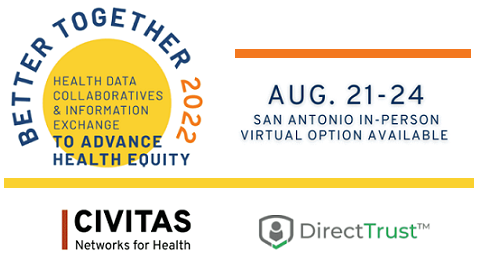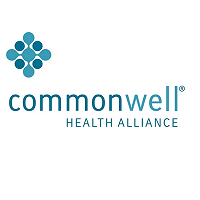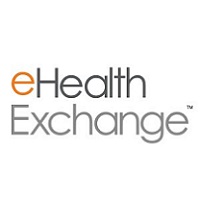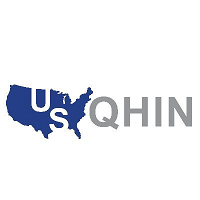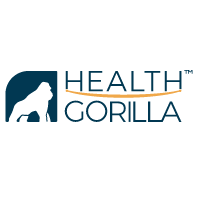This spring marks 18 years in our quest for healthcare interoperability. Under an executive order from president G W Bush, the ONC was established and Dr. David Brailer was dubbed “America’s first Health Information Czar.” The Meaningful Use program was then born out of the HITECH Act and Merit-Based Incentive Payment System was then born our of the MACRA legislation. And then information sharing from the CURES Act. And recently the release of Trusted Exchange Framework and the Common Agreement (TEFCA). All trying to move our healthcare system to the digital age, better outcomes, controlling and reducing costs, and patient access to their health data. It has not been an easy road and the debate of the journey will never end.
Spotlight on Community Networks
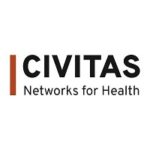 This past August, The Network for Regional Healthcare Improvement (NRHI) and the Strategic Health Information Exchange Collaborative (SHIEC) announced a formal affiliation between the two organizations to form a new organization named Civitas Networks for Health. The organization serves as a platform for local nonprofit health collaboratives and health information exchanges to grow and thrive.
This past August, The Network for Regional Healthcare Improvement (NRHI) and the Strategic Health Information Exchange Collaborative (SHIEC) announced a formal affiliation between the two organizations to form a new organization named Civitas Networks for Health. The organization serves as a platform for local nonprofit health collaboratives and health information exchanges to grow and thrive.
Civitas News
Collaboratives in Action: Reporting and Acting on Racial Bias – View recording of Common Ground Health CEO Wade Norwood who discussed key findings from their Color of Health Report: The Devastating Toll of Racism on Black Lives, as well as the multi-stakeholder process involved in developing the comprehensive report.
Civitas is looking for a Manager/Senior Manager of Operations – This is a full-time position, with an option for a part-time or fractional position depending on circumstances. The Manager/Senior Manager of Operations will be a mission-critical and highly trustworthy person who will help make Civitas Networks for Health a successful, well-run organization. Learn more about the position.
The Civitas 2022 Annual Conference, a Collaboration with the DirectTrust Summit
Healthix and Hixny Announce Collaboration
In a move toward creating efficiencies and increasing access to vital clinical data, Healthix (@healthix) announced a collaboration with Hixny (@Hixny), two leading public New York HIEs, to launch a new SMART on FHIR enabled capability, developed by Hixny. The application, called Concise, will provide a patient record snapshot that quickly delivers data within the provider’s workflow; data that is essential for effective care.
Statewide Collaborative of Health and Community Leaders Announces Launch of findhelpidaho.org
As part of a statewide collaborative, Idaho Health Data Exchange (@idahohde) in partnership with community-based organizations, is excited to announce the launch of findhelpidaho.org. Findhelpidaho.org is part of findhelp. Findhelp is the leading national search and referral platform of social service organizations providing a safe, secure, and effective website for individuals and community-based organizations to connect with social services.
IHDE, in partnership with community-based organizations, is excited to announce the launch of https://t.co/AWOC1M1VWK. The goal of the site is to make finding community resources easy so that people can get the help they need. To learn more visit www.https://t.co/1UkJUy7NHk. pic.twitter.com/sIb0umxDOB
— IHDE (@idahohde) April 6, 2022
Interoperability Market
According to Allied Market Research, the healthcare interoperability solutions market size was valued at $5,320.0 million in 2020, and is expected to reach $21,544.6 million by 2030, registering a CAGR of 14.9% from 2021 to 2030. Interoperability in healthcare refers to timely and secure access, integration and use of electronic health data so that it can be used to optimize health outcomes for individuals and populations. As populations around the world age and people live longer, interoperability and data sharing are going to become increasingly critical for delivering effective healthcare. Interoperability is the ability of two or more systems to exchange health information and use the information once it is received.
According to the report published by Fior Markets, the global healthcare data interoperability market is expected to grow from USD 2.83 billion in 2020 and to reach USD 5.80 billion by 2028, growing at a CAGR of 9.38% during the forecast period 2021-2028. The primary reasons driving healthcare interoperability market growth include a growing focus on patient care, a growing need to tighten healthcare costs, and government measures to improve patient experience of treatment. System interoperability, information interchange, and data availability are all important factors in improving health outcomes. Individual health data is mobilized throughout the whole range of care providers in health organizations, enabling coordinated, safe, and high-quality treatment that supports payment reforms, transparency efforts, and individuals’ ability to control their health.
ONC's Cures Act Final Rule
In May of 2020 the 21st Century Cures Act: Interoperability, Information Blocking, and the ONC Health IT Certification Program released by the ONC and published in the Federal Register. Here is a quick timeline.
Certification
- 6/30/20 – General Effective Date
- 4/5/21 – Compliance requirements start for information blocking, assurance, and API
- 4/5/21 – HIT developers prohibited from restricting certain communications
- 12/15/21 – Submit initial real world testing plans
- 4/1/22 – 1st attestation to conditions of Cert required
- 12/31/22 – New HL7 FHIR API capability and other update criteria must be made available
- 3/15/23 – Submit initial real world testing results
- 12/31/23 – EHI export capability must be made available
The TEFCA Players
ONC Recognized Coordinating Entity (RCE)
 The Recognized Coordinating Entity (RCE) is responsible for developing, implementing, and maintaining the Common Agreement component of the Trusted Exchange Framework and Common Agreement (TEFCA). The Common Agreement is the baseline technical and legal requirements for health information networks to share electronic health information and is part of the 21st Century Cures Act (Cures Act).
The Recognized Coordinating Entity (RCE) is responsible for developing, implementing, and maintaining the Common Agreement component of the Trusted Exchange Framework and Common Agreement (TEFCA). The Common Agreement is the baseline technical and legal requirements for health information networks to share electronic health information and is part of the 21st Century Cures Act (Cures Act).
In addition they will collaborate with ONC to designate and monitor Qualified Health Information Networks (QHIN), modify and update an accompanying QHIN Technical Framework, engage with stakeholders through virtual public listening sessions, adjudicate noncompliance with the Common Agreement, and propose sustainability strategies to support TEFCA beyond the cooperative agreement’s period of performance.
2022 TEFCA Timeline
Q1 of 2022
- Publish Common Agreement Version 1
- Publish QHIN Technical Framework (QTF) – Version 1 and FHIR Roadmap
- Initiate work to enable FHIR-based exchange
- Public education and engagement
Q2 of 2022
- QHINs begin signing Common Agreement and applying for designation
Q3 and Q4 of 2022
- Onboarding of initial QHINs
- Additional QHIN applications processed
- RCE establishes Transitional Council
- RCE begins designating QHINs to share data
- Prepare for TEFCA FHIR exchange pilots
Qualified Health Information Networks (QHIN)
To apply for QHIN Designation, a Health Information Network (HIN) must meet certain prerequisites, including already operating a network that provides the ability to locate and transmit EHI between multiple persons or entities electronically, with existing persons or entities exchanging EHI in a live clinical environment; and providing the RCE with a written plan of how it will achieve all of the requirements of the Common Agreement within a specified time period.

